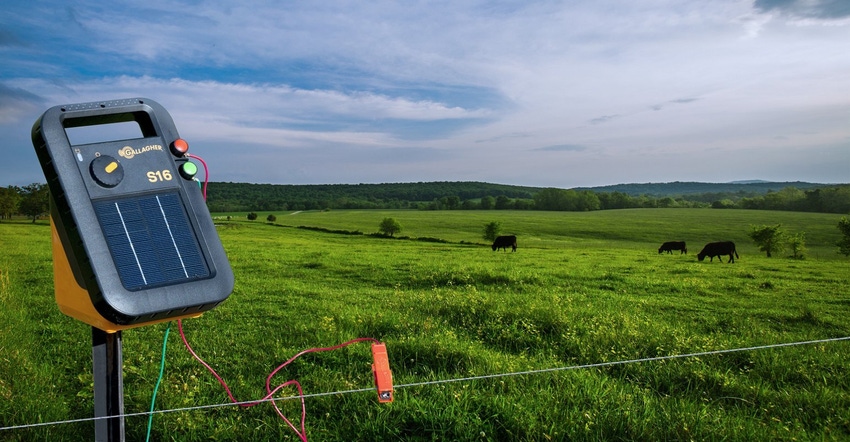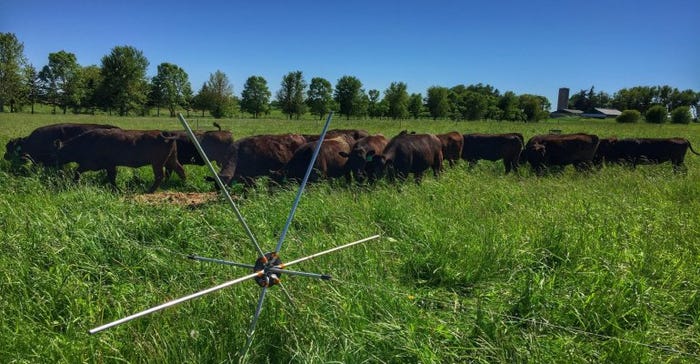Easy to transport, assemble and take down - a portable electric fence system allows total flexibility for any grazing area.
May 1, 2018

Sponsored Content
Managed grazing is the best way to achieve optimum pasture yield as part of the livestock production process. This involves grazing paddocks in rotation using a combination of permanent and/or temporarily fenced grazing areas.
Key Benefits
Effective - maximize results potential of feed and greatly improve the feed quality and yield
Efficient - direct harvesting of grass or fodder crops by animal with the manure returned directly to the soil during the process.
Flexible - use a combination of permanent & portable fencing to maximize grazing area control
Key Considerations
Achieving optimum pasture growth is a delicate balance. When considering how best to meter out the pasture feed available look at the following:
Number & size of grazing areas - grazing specific areas, while ensuring other pasture sections are able to rest and re-grow.
How many animals to put on that grazing area - stocking density determines how efficiently the allocated area is grazed.
And for how long – graze to achieve the desired residual grass height to maintain healthy forage, good root reserves and maximum growth between grazing. The more regular the shift (preferably daily or every few days) the more time the pasture spends growing rather than being grazed, leading to greater grass growth and stock carrying capacity.

The combination of these factors determines the rotation length (how many days before the first area in the rotation is grazed again). The optimum rotation length varies significantly depending on the geographical location and time of year.
When a permanently fenced pasture is further subdivided using portable electric fence the livestock is contained by both a front and a back fence. The back fence protects the recently-grazed area to allow it to recover so it can be grazed again earlier.
Subdivision with high stocking density ensures grass is harvested down evenly to the optimum residual length, and that over time manure is spread more evenly over the whole grazing area.
Using effective grazing methods maintains grass at the high growth stage. This is young, lush, green pasture with high protein and high energy levels. Grazed and rested for the right amount of time creates the optimum conditions for grass growth when the plants produce leafy shoots from the base.
To encourage these shoots to grow, regular but controlled grazing is required. There are various grass varieties to suit different environments. Longer term options last 10 years or more and shorter-term annuals can give extra yield over a shorter timeframe.

Forage crops such as turnips, kale, sorghum are low cost to establish and can be used to fill feed deficits during cold and/or dry months where grass growth slows or stops altogether. Direct grazing of such crops using portable electric fencing eliminates harvesting and feeding out, with animal waste being returned directly to the land.
Easy to transport, assemble and take down portable fencing systems allow total flexibility for grazing area and time either within a permanent electric fence system, or within a traditional, non-electrified fence system using portable energizer power.
Read through the more specific types of electric fencing systems either as an overview or by animal or jump straight to the Getting Started page of the Gallagher website to see which product sets are best suited for your property and animal type.
��
About the Author(s)
You May Also Like



